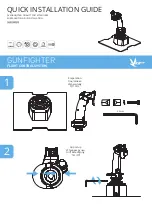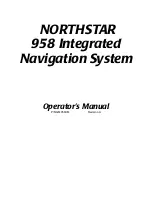
Operator Manual
Raytheon Marine GmbH
Germany
R
NSC 18
RADAR
2
−
31
3748DOC020102
Edition: 14.JAN.2005
2.3.1.8
Search and rescue transponder SART ON/OFF (option)
The SART ON/OFF does not activate ownship SART. It changes receiver
bandwidth to improve SART detection by this radar.
Information about the SART transponder
The purpose of the SART is to trigger a secondary alarm when search and
rescue units are searching for a life raft/lifeboat in distress. The SART will help
the units to pinpoint exactly where the distressed boats are located in a large
area. This is done with the help of the radar on the search ship or helicopter.
When the SART is interrogated (hit) by a radar signal, it will immediately start to
transmit a number of sweeps covering the complete maritime 3 cm radar band.
These sweeps are detected on the radar screen and used to navigate directly
towards the distressed life raft, for details on radar display.
The maximum distance to a ship will normally be about 10 NM or approximately
30 nm to a helicopter, depending on the helicopter’s altitude. The transponder
will not give any alarms further away than this.
How is this situation displayed on the NSC Radar?
This situation appears automatically in the radar video.
The echo display in the radar video depends on the distance of the transponder
from your own ship and can be interpreted as follows.
Figure: 2
−
15 SART transponder < 0.2 NM
Summary of Contents for NSC 18
Page 1: ...3464 100 037 NSC 18 Navigational Radar System User Manual 3748DOC020102 Edition 14 JAN 2005...
Page 3: ......
Page 4: ......
Page 5: ......
















































